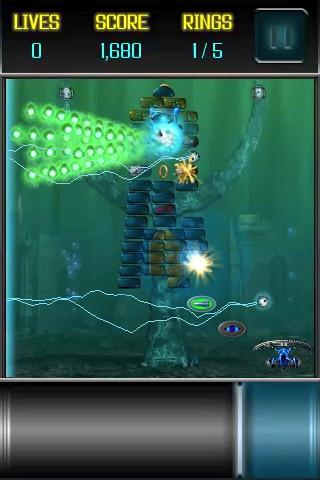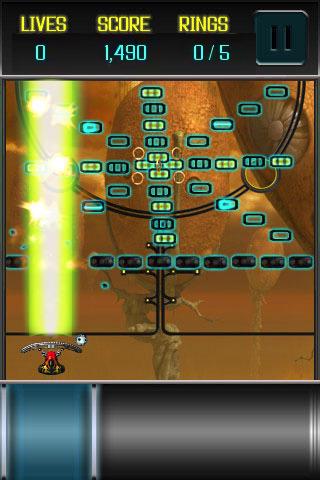- Wondering how to get Monopoly GO! free rolls? Well, you’ve come to the right place. In this guide, we provide you with a bunch of tips and tricks to get some free rolls for the hit new mobile game. We’ll …
Best Roblox Horror Games to Play Right Now – Updated Weekly
By Adele Wilson
Our Best Roblox Horror Games guide features the scariest and most creative experiences to play right now on the platform!The BEST Roblox Games of The Week – Games You Need To Play!
By Sho Roberts
Our feature shares our pick for the Best Roblox Games of the week! With our feature, we guarantee you'll find something new to play!Type Soul Clan Rarity Guide – All Legendary And Common Clans Listed!
By Nathan Ball
Wondering what your odds of rolling a particular Clan are? Wonder no more, with my handy Type Soul Clan Rarity guide.
Ricochet Infinity Review
If we told you that Ricochet Infinity was another Breakout clone, you might well lose a great deal of motivation to carry on reading. If we were to then tell you that the game’s a conversion of a three year old PC game, you might just shut down your web browser altogether. Don’t touch that dial – Ricochet Infinity belies its humble origins to inject the excitement back into bat ‘n’ ball games.

Injects some much needed vitality into the Breakout formula
If we told you that Ricochet Infinity was another Breakout clone, you might well lose a great deal of motivation to carry on reading. If we were to then tell you that the game’s a conversion of a three year old PC game, you might just shut down your web browser altogether. Don’t touch that dial – Ricochet Infinity belies its humble origins to inject the excitement back into bat ‘n’ ball games.
The old bat, ball and bricks formula is almost as old as video games get. Inspired by the seminal Pong (which was released just four years previously), Breakout hit the arcades in 1976 and the brick-breaking genre was born. I’d venture so far as to say that we’ve all played a variation of this simple game at some point in our lives.
As such, it’s hard to muster much enthusiasm when yet another interpretation appears. Been there, done that, bought the knowingly retro Atari T-shirt. Ricochet Infinity overcomes your ennui through ingenious (not to mention generous) level design, exciting power-ups and a compelling level-up structure.
The core action is unashamedly Breakout, though. You steer your paddle left and right, keeping a ball in play until all of the bricks in each level are gone. The developer has thoughtfully left a thick band free at the bottom of the screen so that your finger doesn’t obscure the action as you slide it left and right. It’s the best way to control action of this kind on iPhone, with the accelerometer reserved for a separate function (more of which later).
While the fundamentals remain the same, each element has been expanded and enhanced with remarkable success. The main one has to be the bricks themselves. Gone are the static, orderly lines in favour of elaborate formations that shift and pulsate, presenting moving targets that change the shape of play in new and surprising ways.
Before the first world is complete you’ll have encountered a constantly rolling moon buggy made up of dozens of tiny breakable bricks, and a towering lighthouse with its constantly sweeping light beam made up of luminescent bricks. It’s brilliantly imaginative stuff.
Your paddle – or ship, as it’s known here – is also made more interesting thanks to the game’s upgrade system. Every time you collect a certain number of the rings that inhabit each level, you level up, unlocking a new ship and (less frequently) a new ball. The latter is merely a cosmetic choice, but each ship comes with a unique combination of power-ups to complement its snazzy paint job.
The American flag-themed ship – to name one from the 24 on offer – can utilize a missile-firing Meg-O-Blaster, a Shield Expander, a speed enhancer and a ball shrinker. These power-ups play a large part in upping the fun, with the projectile variants (such as the aforementioned Meg-O-Blaster) effectively turning the game into a satisfying Space Invaders clone for a minute or so. Then there are the less-exciting but imaginative stock power-ups, such as the one that sprouts additional miniature balls every time you hit a block.
As well as such temporary delights, you have permanent access to an incredibly useful tilt system. Rotate your handset either way and a tractor beam will lock onto your ball(s) and start pulling it (or them) accordingly. In this way you can guide your ball with uncanny precision, or keep it pounding into a specific cluster of blocks.
It almost seems to grant you too much power at times, as you don’t have to rely on your angle judgement so much. While this is an inescapable drawback, it does balance out a little in that overuse of the tilt system can prove fatal. It can be tough to judge the landing trajectory of your ball after it’s been subjected to this trick.
While we’re discussing flaws, I should point out that the game’s hardly a technical showcase. The graphics are functional, if a little bland, with disappointingly static backgrounds. Despite this, I experienced frequent bouts of slow-down on my second generation iPod touch. The loading times, also, are of the patience-stretching variety and frequency.
Still, it’s hard to complain when Ricochet Infinity offers up such a generous and surprisingly imaginative package. Just another Breakout clone? Don’t you believe it.

The good

The bad
More articles...
Monopoly GO! Free Rolls – Links For Free Dice
By Glen Fox
Wondering how to get Monopoly GO! free rolls? Well, you’ve come to the right place. In this guide, we provide you with a bunch of tips and tricks to get some free rolls for the hit new mobile game. We’ll …Best Roblox Horror Games to Play Right Now – Updated Weekly
By Adele Wilson
Our Best Roblox Horror Games guide features the scariest and most creative experiences to play right now on the platform!The BEST Roblox Games of The Week – Games You Need To Play!
By Sho Roberts
Our feature shares our pick for the Best Roblox Games of the week! With our feature, we guarantee you'll find something new to play!Type Soul Clan Rarity Guide – All Legendary And Common Clans Listed!
By Nathan Ball
Wondering what your odds of rolling a particular Clan are? Wonder no more, with my handy Type Soul Clan Rarity guide.








